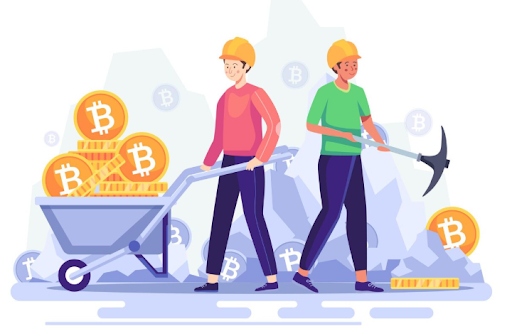We’ve all heard of Bitcoin by now. The mysterious digital money that seemingly appeared out of nowhere and disrupted global finance. But while most people kind of understand Bitcoin, not everyone really gets how it works, especially when it comes to mining.
Bitcoin mining sounds like something you’d need a pickaxe and helmet for, but it’s actually done on computers. It’s how new Bitcoins are created and how the whole Bitcoin network stays secure and functional.
So, if you’ve ever wondered how digital coins magically appear, here’s your look at the process of Bitcoin mining.
Table of Contents
What Is Mining?
In simple terms, mining is the process of validating transactions and adding them to the Bitcoin blockchain (that is, the public record of all Bitcoin activity).
Miners use powerful computers to solve complex mathematical puzzles. When a miner manages to solve one, they get to add a new “block” to the blockchain and earn some freshly minted Bitcoin as a reward.
The Technical Part
Here’s how Bitcoin mining actually works, step by step:
A Transaction Happens
Let’s say someone sends you some bitcoins. Now, you already know what is Bitcoin, but how does the transaction work?
It gets broadcast to the Bitcoin network, where it joins a waiting room of other unconfirmed transactions. This is known as the memory pool.
Miners Pick Transactions
Miners grab a bunch of those transactions and group them into a block. Think of it like collecting some papers to staple together.
The Puzzle
Now comes the complicated part. The miners have to solve a cryptographic puzzle that requires a lot of computing power. This puzzle keeps the network secure and prevents fraud.
It involves finding a specific number called a nonce (short for “number only used once”) that, when combined with the block data and run through a cryptographic function called SHA-256, produces a hash that starts with a certain number of zeros.
First to Solve Wins
Whichever miner finds the correct answer first gets to add the block to the blockchain. This is called “proof of work” – the proof being the crazy amount of computing they just did.
The Reward
The winning miner receives:
- The current block reward
- All the transaction fees from the block they added
Then the cycle repeats. Every 10 minutes or so, new blocks are added to the blockchain.
Why Is It Called “Mining”?
It’s called mining because it’s a bit like gold mining. You’re using resources (in this case, electricity and computing power) to uncover something valuable (Bitcoin). Except that instead of digging underground, you’re competing against others to solve math problems at a very high speed.
It can be energy-intensive, which is one of the biggest criticisms of Bitcoin. Mining requires massive energy, especially in areas where miners use entire warehouses full of specialised computers that are solely built for mining Bitcoin.
Can Anyone Become a Bitcoin Miner?
Back in the early days, you could mine Bitcoin on a decent laptop. Now? Not so much.
These days, solo mining isn’t practical unless you’ve got:
- Access to specialised hardware
- Extremely cheap electricity
A cool (literally) environment to prevent overheating

